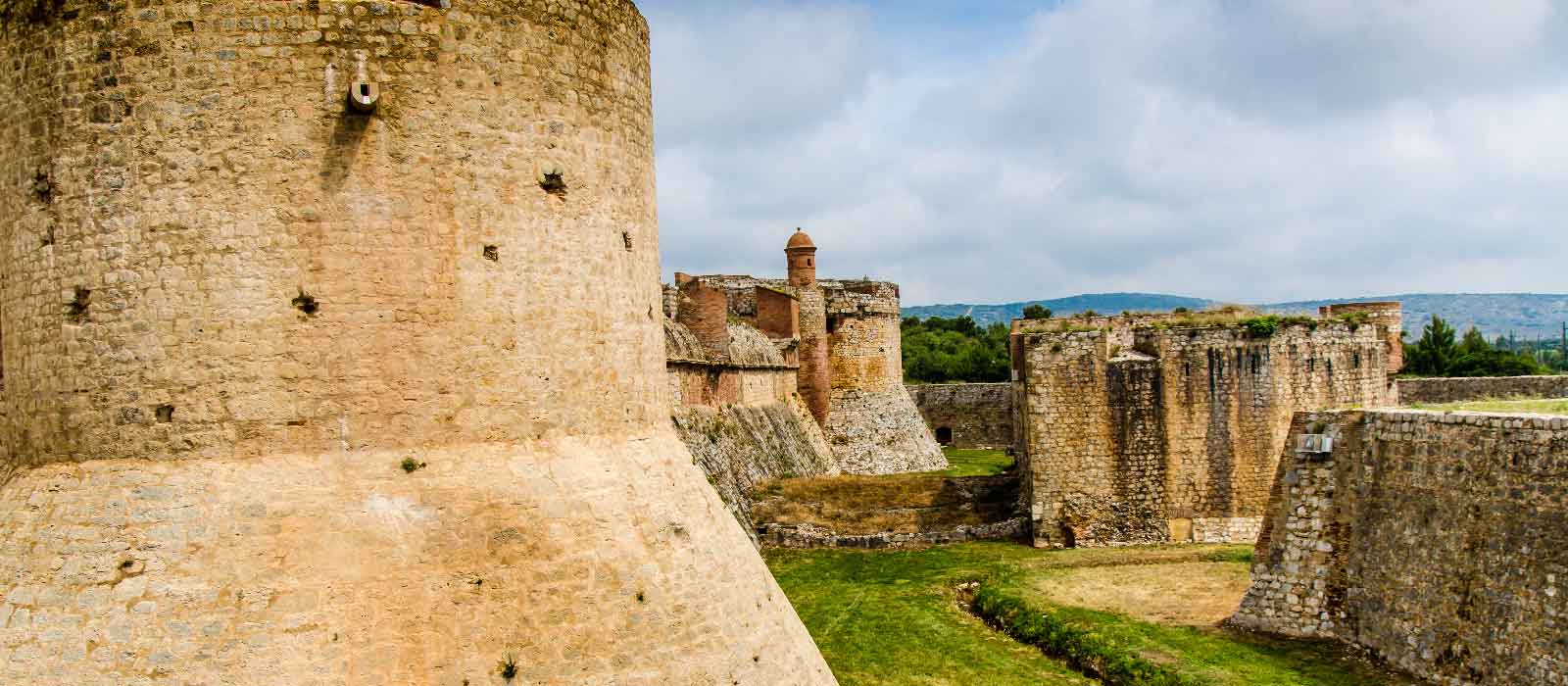10 unusual places in the Pyrénées Orientales
Sea, mountains, lakes, caves, countryside … Due to its exceptional geographical location, a territory close to Spain flanked by the Pyrenees and the Mediterranean, the Pyrénées-Orientales department is home to breathtaking natural sites and buildings. You will need to look for your second to reach some of the 10 unusual places of 66 that we have selected to liven up your camping holiday in the Pyrénées Orientales.
Orgues d’Ille, Ille-sur-Têt
This site is difficult to access, like so many natural treasures. And that’s good, because only nature lovers have the chance to find out. The Orgues d’Ille-sur-Têt are geological formations carved out by erosion for 4 million years. These surprising fairy chimneys, one of the most astonishing natural sites of the Pyrénées-Orientales, can be visited by means of a landscaped path.
Caramany Lake
About twenty kilometers west of Perpignan, the majestic Lake Caramany brings together more than one ingredient to surprise nature lovers: a vast expanse of water, hiking trails, some magnificent viewpoints and caves to explore.
Pond of Saint-Nazaire
Its unusual shape, which vaguely recalls that of the African continent, does not leave you indifferent. We recommend that you approach the banks of the Saint-Nazaire pond before dawn to witness a magical dawn. It is easily accessible by car from Saint-Nazaire and Canet-en-Roussillon.
Alexandra abandoned hotel, Vernet-les-Bains
This hotel forgotten by time and by men is located in a fabulous natural setting between Casteil and Vernet-les-Bains, near the peak of Canigou, in the regional natural park of the Catalan Pyrenees. Do not forget your camera, because your shot is bound to be successful.
Saint-Martin Chapel, Camélas
You will have to take the D615 between Corbère-les-Cabanes and Thuir then turn towards Camélas to reach this unique chapel. The tranquility of the place and the view of the Canigou massif will captivate and relax you, I promise!
Catalan boats of Bonança, Saint-Hippolyte
The Bonança association in Saint-Hippolyte between Le Barcarès and Salses-le-Château was created in 1996 with the aim of protecting maritime heritage. For more than two decades, she has been recovering and restoring Catalan boats. Take the time to admire the work of these volunteers who love the sea and take advantage of your getaway to stroll along the Leucate pond.
Pic de la Peña, Casteil
Hiking enthusiasts, take out your walking shoes and conquer the peak of the Peña in Casteil, recognizable by the Catalan flag which proudly flies at its summit. The circuit starts in Vernet-les-Bains, in the Casino supermarket car park (approximate duration: 2h30).
Caune de l’Arago, Tautavel
La Caune de l’Arago north of Perpignan is a prehistoric site overlooking the Verdouble River. The remains of Tautavel’s man were found there. The site is classified as a historical monument and the unobstructed view of the Verdouble plain from the entrance to the cave is striking.
Gorges du Gouleyrous, Tautavel
In Tautavel, your visit should also include the Gouleyrous gorges, under the Arago caune. They stretch for nearly a hundred meters. You can swim between unusual formations and relax on a pebble beach.
Caves of Canalettes, Villefranche-de-Conflent
Proud to appear on the list of the most beautiful villages in France, Villefranche-de-Conflent has a remarkable heritage including Fort Liberia (listed as a UNESCO World Heritage Site) and the Church of Saint-Jacques. Less well known, the Canalettes caves are a set of natural cavities that belong to a vast network of lakes and underground canals.

 Our Approach
Our Approach  FAQ
FAQ  Contact
Contact 

